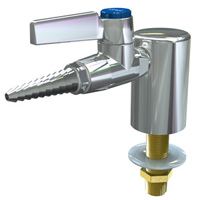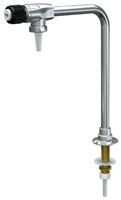| The Home page of ILPI's Safety Data Sheet (SDS) Resource, the leader in SDS information since 1995! | |
| The history and philosophy behind this resource. | |
| A curated collection of books and reference materials concerning Safety Data Sheets and closely related topics. | |
| Paste your plain text SDS into the SDS-Demystifier, and it will be converted into a hypertext-enriched document with links to detailed explanations of each key term. | |
| An extensive list of frequently asked questions about Safety Data Sheets including regulations, content, compliance, and more. | |
| A humorous take on Safety Data Sheet jargon. Fill in the blanks on our entry form to generate a personalized Unsafety Data Sheet to share with your coworkers. | |
| Since 1995, we've maintained this massive curated list of the best places to find Safety Data Sheets on the Internet. | |
| Way more than a glossary, this hypertext-enhanced resource covers hundreds of SDS-related terms and expert knowledge. Each entry includes both the SDS relevance and links to additional authoritative resources. | |
| Archived results of Safety Data Sheet related polls taken by some of our millions of site visitors | |
| You are here! The OSHA regulations behind SDS regulations, including the inspection guidelines and over 400 official interpretations letters under the Hazard Communication Standard | |
| Commercial suppliers of SDS authoring and management software as well as cloud compliance services. | |
| Commercial companies that will create SDS's for your specific needs as well as SDS translation companies. |

Safety signs, banners, and scoreboards? Get yours at Safety Emporium!
| Title: 11/10/2014 - Labeling of secondary containers in laboratories under the Hazard Communication standard | |
| Record Type: Interpretation | Standard Number: 1910.1200(b)(3); 1910.1450(a)(1); 1910.1450(b); 1910.1450(h)(1)(i) |
OSHA requirements are set by statute, standards and regulations. Our interpretation letters explain these requirements and how they apply to particular circumstances, but they cannot create additional employer obligations. This letter constitutes OSHA's interpretation of the requirements discussed. Note that our enforcement guidance may be affected by changes to OSHA rules. Also, from time to time we update our guidance in response to new information. To keep apprised of such developments, you can consult OSHA's website at https://www.osha.gov
November 10, 2014
Caroline Boisclair, Safety Engineer
SUNY College of Nanoscale Science & Engineering
253 Fuller Road
Albany, New York 12203
Dear Ms. Boisclair:
Thank you for your June 11, 2014, letter to the Occupational Safety and Health Administration's (OSHA) Directorate of Enforcement Programs. Your questions concern the labeling of secondary containers in laboratories under the Hazard Communication standard (HCS 2012), 29 CFR 1910.1200 and the Laboratory standard, 29 CFR 1910.1450. This letter constitutes OSHA’s interpretation only of the requirements herein, and may not be applicable to any questions not delineated within your original correspondence.

Safety Emporium has all kinds of lab equipment such as valves and faucets.
Background: HCS 2012 does not apply to laboratories that are covered under the Laboratory standard, 29 CFR 1910.1450. The HCS covers laboratories whose function is to produce commercial quantities of materials, and all laboratories connected with production processes, including quality control laboratories. The Laboratory standard, on the other hand, covers laboratories meeting the criteria of “laboratory use” and “laboratory scale” and excludes procedures that are part of a production process. 29 CFR 1910.1450(a)(1). The preamble to the Laboratory standard states most quality control laboratories are not expected to meet the qualification for coverage under the Laboratory Standard. Quality control laboratories are usually adjuncts of production operations...
55 Fed. Reg. 3300, 3312 (Jan. 31, 1990). Research and academic laboratories meeting the criteria of “laboratory use” and “laboratory scale” are covered by the Laboratory standard, not the HCS.
Other types of laboratories, such as quality control and production laboratories, that are not covered by the Laboratory standard are covered by the HCS. Under 29 CFR 1910.1200(b)(3), laboratories covered under the HCS must:
- Ensure that labels on incoming containers of hazardous chemicals are not removed or defaced, (b)(3)(i);
- Maintain any safety data sheets that are received with incoming shipments of hazardous chemicals, and ensure that they are readily accessible during each workshift to laboratory employees when they are in their work areas, (b)(3)(ii);
- Ensure that laboratory employees are provided information and training in accordance with paragraph (h) of the HCS, except for the location and availability of the written hazard communication program under paragraph (h)(2)(iii), (b)(3)(iii); and,
- If the laboratory ships hazardous chemicals, it must meet the label and SDS requirements in (f) and (g) of the HCS.
The series of OSHA publications on Laboratory Safety, including the information sheet you refer to in your letter, Laboratory Safety: Labeling and Transfer of Chemicals Quick Facts, are provided as guidance for employers and employees working in a laboratory-type setting in general. As we transition to full compliance with HCS 2012, the agency will be revising these and other publications to include the HCS 2012 requirements.
Your paraphrased questions and our responses are below.
Question: What is the expectation for labeling portable (secondary) containers in an academic or research laboratory?
Response: Academic and research laboratories that are covered under 1910.1450 are exempt from the HCS 2012. The Laboratory standard requires that labels on incoming containers of hazardous chemicals not be removed or defaced, 1910.1450(h)(1)(i), but does not have a specific labeling requirement for secondary containers of hazardous chemicals in a covered laboratory. The Laboratory standard allows laboratories flexibility in tailoring their written Chemical Hygiene Plan (CHP) and standard operating procedures to be protective of employees in laboratories (29 CFR 1910.1450(b)). In addition, 1910.1450(f)(4), Training, requires the employer to train employees regarding the physical and health hazards of chemicals in the work area, the measures employees can take to protect themselves from these hazards, and the employer’s CHP.

Get your pure water valves and faucets from Safety Emporium.
OSHA encourages employers to consult non-mandatory Appendix A of the Laboratory standard, National Research Council Recommendations Concerning Chemical Hygiene in Laboratories, which contains numerous recommendations for labeling chemicals in laboratories. Employers may also wish to consult the most recent edition of the National Resource [(sic); the correct word is "Research"] Council's Prudent Practices in the Laboratory Handling and Management of Chemical Hazards for further recommendations on safe laboratory practices.1
Question 2: Will employers be required to re-label containers of hazardous materials previously purchased to comply with the HCS provisions?
Response: No, employers need not re-label containers of hazardous chemicals that were shipped prior to June 1, 2015. Manufacturers and importers are required to ship containers of hazardous chemicals with HCS 2012-complaint labels beginning June 1, 2015 (for distributors, the date is December 1, 2015). The employer should ensure that employees understand the differences between the HCS 1994-compliant labels and HCS 2012-compliant labels and that the lack of pictograms, signal words, etc., on HCS 1994-complaint labels does not mean the chemical(s) are less hazardous.
As you aware, the State of New York operates a public sector only occupational safety and health program under a plan approved by the U.S. Department of Labor. This program provides safety and health protections to state and local government employees within the state of New York. State plans are required to implement regulations that are “at least as effective” as the federal standards. If you would like further information regarding New York occupational safety and health requirements, you may contact the New York Department of Labor, Division of Safety and Health, at the following address:
Public Employees Safety and Health (PESH) Bureau
Governor W. Averell Harriman State Building Campus
Building 12, Room 158
Albany, New York 12240
Phone: (518) 457-1263
Fax: (518) 457-5545
Thank you for your interest in occupational safety and health. We hope you find this information helpful. OSHA's requirements are set by statute, standards, and regulations. Our letters of interpretation do not create new or additional requirements but rather explain these requirements and how they apply to particular circumstances. This letter constitutes OSHA’s interpretation of the requirements discussed. From time to time, letters are affected when the
Agency updates a standard, a legal decision impacts a standard, or changes in technology affect the interpretation. To assure that you are using the correct information and guidance, please consult OSHA’s website at https://www.osha.gov. If you have further questions, please feel free to contact the Office of Health Enforcement at (202) 693-2190.
Sincerely,
Thomas Galassi, Director
Directorate of Enforcement Programs
1 National Research Council. [now known as the National Academies of Sciences, Engineering, and Medicine]
"Prudent Practices in the Laboratory Handling and Management of Chemical Hazards." Washington DC: National Academies Press.
The original official public domain version of this document is available from OSHA at https://www.osha.gov/laws-regs/standardinterpretations/2014-11-10-0.